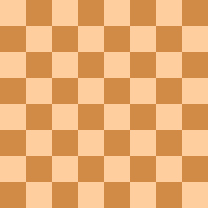
Back Hind müdafiəsi Azerbaijani Defensa índia antiga Catalan Staroindická obrana Czech Altindische Verteidigung German Malnova hinda defendo Esperanto Defensa india antigua Spanish Vanhaintialainen puolustus Finnish Défense vieille-indienne French Difesa vecchia indiana Italian Үнді қорғанысы Kazakh
| |||||||||||||||||||||||||||||||||||||||||||||
| Moves | 1.d4 Nf6 2.c4 d6 | ||||||||||||||||||||||||||||||||||||||||||||
|---|---|---|---|---|---|---|---|---|---|---|---|---|---|---|---|---|---|---|---|---|---|---|---|---|---|---|---|---|---|---|---|---|---|---|---|---|---|---|---|---|---|---|---|---|---|
| ECO | A53–A55 | ||||||||||||||||||||||||||||||||||||||||||||
| Parent | Indian Defence | ||||||||||||||||||||||||||||||||||||||||||||
| Synonym(s) | Chigorin Indian | ||||||||||||||||||||||||||||||||||||||||||||
The Old Indian Defense is a chess opening defined by the moves:
This opening is distinguished from the King's Indian Defense in that Black develops their king's bishop on e7 rather than by fianchetto on g7. Mikhail Chigorin pioneered this defense late in his career.
The Old Indian is considered sound, though developing the bishop at e7 is less active than the fianchetto, and it has never attained the popularity of the King's Indian. Some King's Indian players will use the Old Indian to avoid certain anti-King's Indian systems, such as the Sämisch and Averbakh Variations.
The opening is classified in the Encyclopaedia of Chess Openings with the codes A53–A55.
